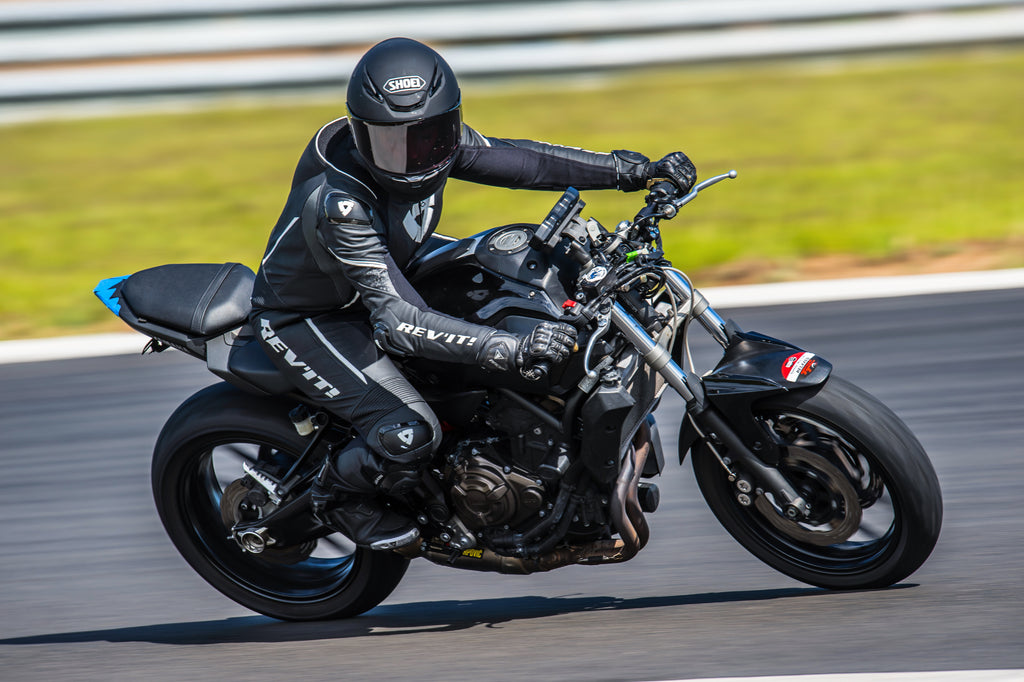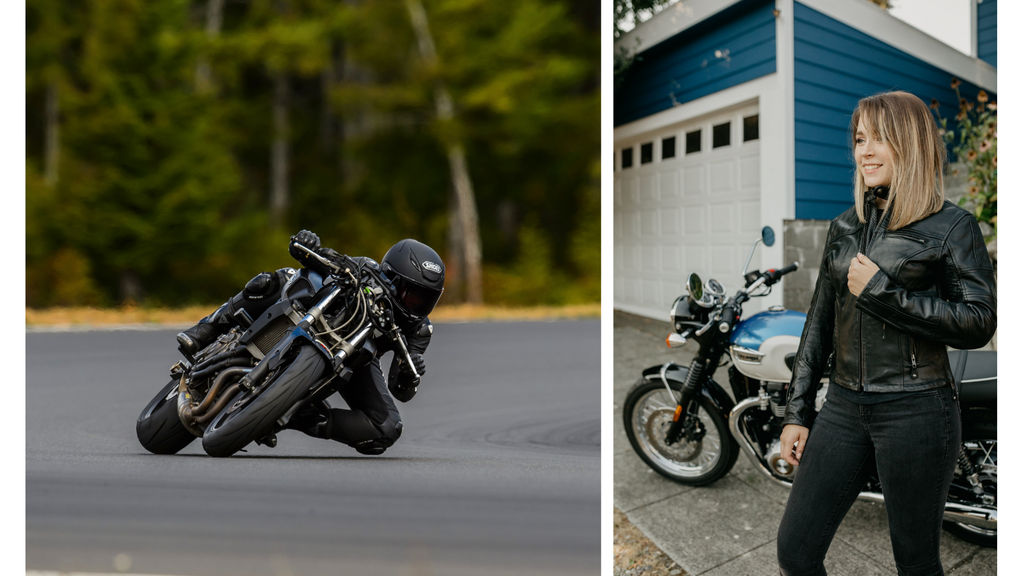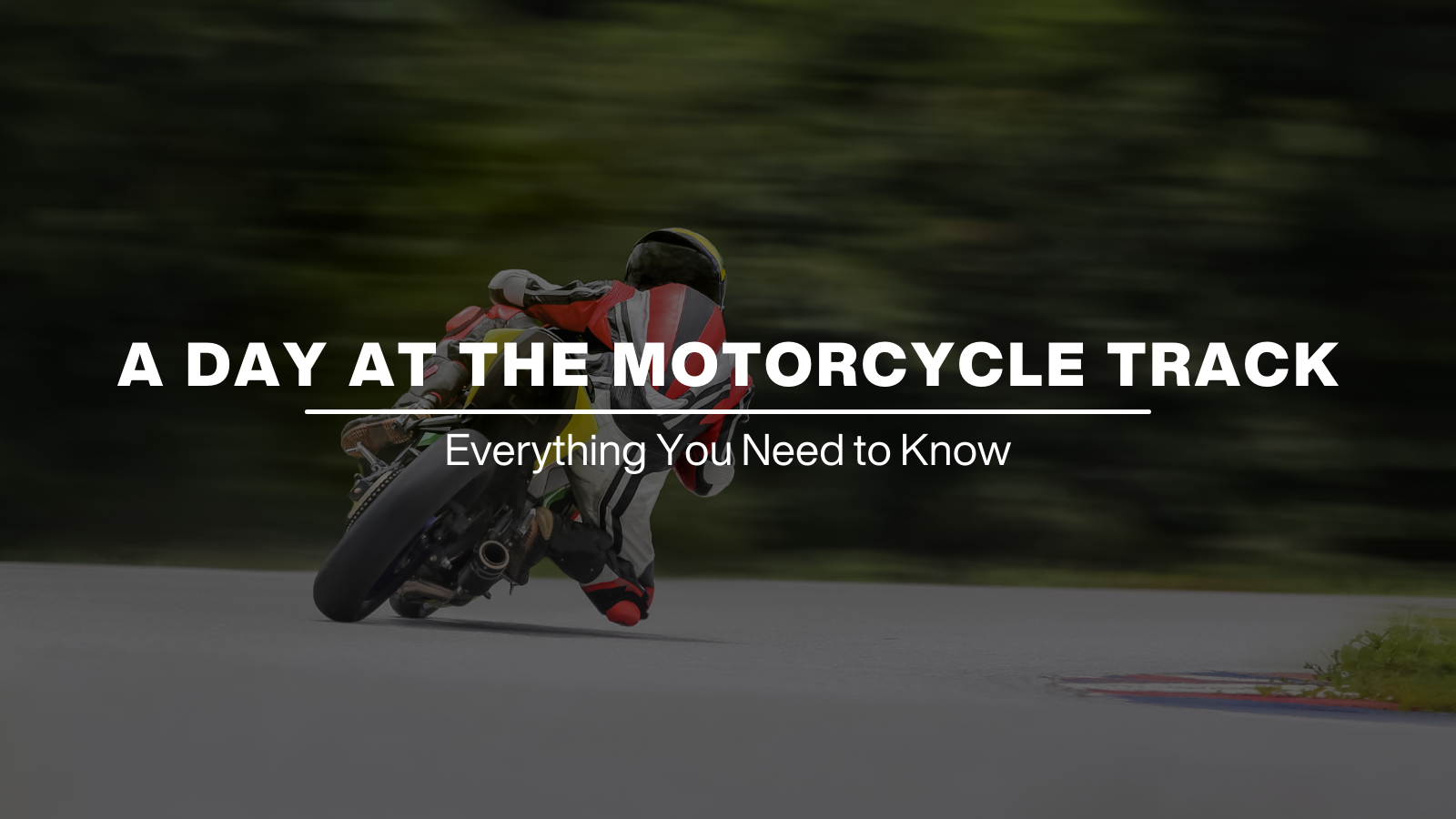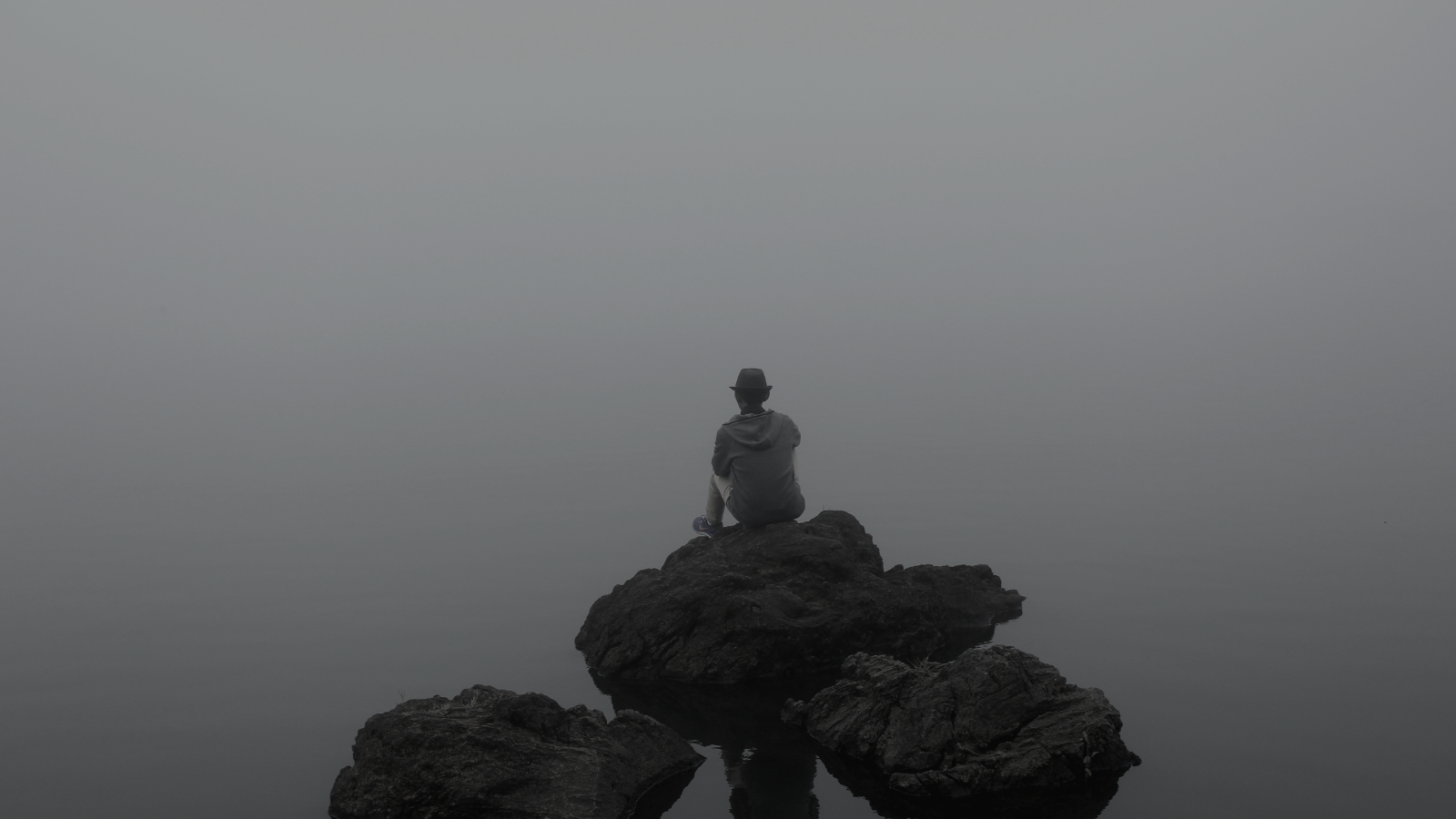by Hailey Arnold
If you’re thinking about trying motorcycle track riding day… just do it!!

Track days are, without a doubt, the best way to learn and practice intermediate and advanced street riding skills. If you want to have fun and learn something on a bike, track days deliver every time.
Usually when I talk to people who are curious to try track days, the biggest barrier to entry to overcome, besides cost, is intimidation. Even confident street riders will sometimes look at track days and think, “that’s too hardcore for me.” Consequently, they think that only the most hardcore riders can attempt a track day. Part of the reason why track days have this reputation is because people often conflate track days with road racing. While track days may be a gateway drug to road racing for some, there is nothing inherently competitive about participating in a track day. And despite popular belief, you don’t actually have to be fast to try a track day. The whole point of track days is to have a safe outlet to improve your riding skills and push your limits, with resources like coaches and vendors available to help.
I’m not going to try to tell you that track days aren’t terrifying as a newbie. Anyone who says they weren’t nervous during their first track day is full of shit. At the start of my first track day, I was literally shaking in my boots. My stomach was in knots, and my heart was pounding hard enough that I could hear it in my helmet. I did not feel like a badass. I felt like an idiot that had no business being out there.
The other participants and I were lined up in the hot pits, all in full race gear, bikes rumbling, waiting for the go-ahead to take off and enter the track. I sat on my motorcycle in a brand new leather tracksuit and bright green “student” vest, the most ridiculous outfit I’d ever been audacious enough to put on, stiff as a board. My thoughts were racing. How could I have let my crazy friends convince me to do this?? Who do I think I am, Rossi?? What if I make a fool of myself? What if I suck at this? What if I get hurt? Even worse, what if I total my bike?
Just then, my coach for the day, a 20-year old club racer named Emily, turned around in her seat to look at me with a giant grin on her face, her eyes asking me “are you ready?” Oh my god. I’m not ready, but it’s too late to chicken out now. Suddenly, we were waved off the starting line and riding towards the track entrance. All I could manage to do was fix my eyes on Emily’s tail as she towed me around the first corner. I swear I thought I was going to completely forget how to ride a motorcycle. But, I was doing it!
Emily looked back to check on me and give a thumbs up of encouragement, and we picked up some speed. The rest of our first session was a blur, and before I knew it, the checkered flag was waving and it was time to exit the track. I couldn’t believe our first 20 minutes of track time were already up. I made my way back to my pit, where my friends were waiting to give me a slap on the back and excitedly ask me how I liked it. I didn’t die! I was in a daze, but it wasn’t as scary as I thought it was going to be.
We didn’t go that fast, just above average street speeds, and everyone gave us plenty of room. Emily towed me around the corners at a totally manageable pace and, despite my fear, I felt like I had complete control over my bike. Okay, maybe I can do this.
For the rest of the day, Emily rode in front of me, pointing out landmarks for braking zones and corner entries, and showing me the correct lines around the track. Faster riders passed me over and over, but they always gave me a wide berth so I wasn’t afraid we would crash into each other. I was tentative, and rode more gingerly than usual, but I was gaining confidence with every lap. Emily and I swapped positions so she could critique my riding and make helpful suggestions. Between sessions, Emily and the other coaches gave all the students tips on body positioning, how and where to apply brake and throttle, general track safety, and much more.
Everyone I met was supportive and friendly, all smiles and laughter. By the end of the day I was completely exhausted, but also incredibly energized by the experience. I had finally built up the courage to try something I never thought I’d be capable of doing in a thousand years. This is freaking awesome, I thought. I couldn’t wait to come back.
Before/After:

What to Expect at a Track Day
All the major race tracks are shared by a handful of organizations that run track day events. Each track day org will have a slightly different procedure for running their track days, so the experience may vary depending on which org you book through. For example, the number of riders allowed on the track at one time may vary. Some orgs may also offer more attentive marshalls or coaches, and free classroom instruction for beginner track riders. Track day prices will also vary depending on region and the organization you book through. As you might expect, not all track orgs are the same and some provide a better experience than others. Therefore, it’s a good idea to connect with track day riders in your area to ask their opinions on which orgs they like best (and why).
Which factors contribute most to a great track day experience? This is subjective, of course, but here’s my take. I prefer to ride with fewer riders on track at the same time. When the track is over-crowded, it’s common to run into “traffic” and clumps of riders. Passing is usually an option, but it’s hard to practice skills like perfecting your lines and body positioning when you are navigating around slower riders. In the event that someone crashes, the best orgs will be on sight immediately, and will also retrieve a crashed bike from the track as a courtesy. Another trait of a great org is the commitment to enforcing a code of conduct. Yeah, yeah, the fun police! If a rider is making dangerous passes, or they’re acting too aggressive, a marshall will kindly give them a warning or ask them to leave the track. The code of conduct helps keep everyone safe and comfortable. My favorite track day org also provides knowledgeable and friendly staff who are happy to offer tips and answer questions. Attentive and helpful staff foster a great learning environment! Lastly, I really appreciate track day orgs that make an effort to be welcoming and respectful to women. Track days can be a bit of a sausage fest, but more women are getting on the track each year!
Training with Coach Jenny Chancellor

Instructor Giving a New Rider a “Ride Along”

Too Much Traffic!

When you arrive at the track for your first track day, its totally normal to feel overwhelmed. There’s a lot going on and the day goes by quickly. Time flies when you’re having fun, right? Most track day orgs stick to the same basic schedule. First thing in the morning, riders are asked to being their bike to tech inspection. Then, there is a mandatory riders meeting, where the facilitators will explain the meaning of their various corner flags, the safety protocol in the event of a crash or hazard, and the code of conduct. You will not be allowed ride if you miss tech inspection or the rider’s meeting, so don’t be late! The crowd is usually split up into three (self-assigned) groups prior to the event: slow/beginner group, intermediate group, and fast/advanced group. Each group will take a turn going out on the track for twenty minute sessions (give or take a few mins depending on org). Midday, everyone will break for lunch, and then ride a few more sessions in the afternoon. If you stay on top of the schedule, you can queue up in the hot pits early to take advantage of every second of your session. But it’s also okay to frantically scramble at the last minute and go out late. Riders are free to come and go from the track during their group’s session.
Hot Pit

Bike Prep
It’s super important to be prepared! This means making sure your bike will pass tech inspection. Each org will have a checklist of bike condition requirements that you’ll want to review well ahead of your track day. Some orgs are super strict (a good sign that they take safety seriously) and some are a bit more relaxed with their tech inspections.
In a nutshell, you want to make sure all the wiggly bits and bolts are securely attached to your bike, and the “consumable” parts are fresh. Your tires will need to be in good condition with plenty of tread left. Note: You do not need slicks for your first track day. Regular street tires are fine! Brake pads must be relatively fresh. No fluids can be leaking from your bike, and your chain must be clean, lubed, and tightened to spec. It’s not required, but I’d definitely recommend getting an oil change within a couple hundred miles of your track day, your bike will thank you!! Your friendly neighborhood motorcycle technician can help you prepare your bike, as long as you schedule ahead of time. I’m looking at you, fair-weather procrastinators! Motorcycle shops get VERY busy in summer. Lastly, you’ll need to cover your headlight, taillight, and mirrors with duct tape or painter’s tape. This is traditionally done to reduce debris on the track in the event that you crash, but it also looks kinda cool and official.

Required Gear
Once again, check with your org to find out what kinds of gear is required to participate in their track day event. The safety-focused orgs will require the following items:
- A SNELL-approved helmet (or at least a DOT and ECE approved, full-face helmet)
- A one-piece or two-piece leather track suit
- Gauntlet gloves with armor
- Track boots or tall riding boots, preferably with sliders and lots of armor
Sometimes orgs will allow more casual riding gear such as textiles in the relaxed/beginner group, but I’d encourage you to try to borrow or rent proper track gear if you can’t invest in your own before your first track day. Safety first, kids! I also highly recommend wearing cooling base-layers under your suit. Base-layers will help you regulate your body temperature to stay cooler, and help prevent getting stuck in your leathers.

My Gear: Shoei RF-1400, Rev’it Xena 1pc Race Suit, Racer Brand High Racer Women’s Gloves, Dainese D1 Torque Out Boots
Getting There
Please do not just ride to the track. I know, organizing a truck or trailer is a huge hassle and expense, but it’s worth it. You do not want to be limited to bringing only what fits in your backpack. You need a contingency plan for getting home in case you crash and break your bike. Race tracks are usually well off the beaten path and may take hours to travel to, which makes for a really long ride home after an already exhausting day. Trailer your bike! A lot of people simply rent Uhaul trucks or trailers. Others bum a ride from a better equipped track friend. After fully committing to the track life, my partner and I have invested in a folding Kendon trailer to haul our bikes around. I cannot recommend this enough.

What to Bring - Other Important Stuff
Track days require a lot of stuff. I like to use a checklist of track day necessities to keep track of it all. I am not normally a checklist person, but I find that for keeping track of motorcycle gear, it really helps me reduce stress and stay organized before the big day.
At the bare minimum, you will need:
- Your riding gear (check twice for your gloves!)
- Motorcycle earplugs, for hearing protection and focus (note - there are no noise limitations on race exhausts so it’s LOUD out there)
- Lots of water!! Way more than you normally drink.
- Somewhere to sit (and shade!)
- Snacks and lunch (there might be a cafe at your track, but it’s best to bring your own food anyway, just in case)
- Something comfy to change into when you’re not riding, like shorts or sweatpants
- Extra fuel for your bike (even a full tank of gas won’t last the whole day)
- Sunscreen (don’t forget to slather the back of your neck!)
What seasoned track day enthusiasts bring:
- A sturdy pop-up tent for shade (I like ABC Canopy brand) and folding chairs
- Yoga mats for stretching
- Basic tools in case of a repair emergency
- A cooler filled with ice for snacks and beverages
- A push scooter, bicycle, or “pit bike” to get across the paddock
- A generator to power tire warmers
Track Snacks - I’m a big fan of light and healthy, energy-packed snacks for track days. I like to avoid salty or fried foods because I’ve noticed they make me feel lethargic. Fruit, trail mix with nuts, energy bars, cubed cheese, shredded chicken, peanut butter and crackers, are all great track day snacks.
Check out this detailed checklist my friend put together to help you pack for a track day!
Other Tips
- Your first lap out is always a warm-up, literally! Your tires need time to warm up for optimal traction. The track is always coldest in the morning, so take it easy in your first session.
- Listen to your body and your gut, if you feel out of it, take a break. If you’re too tired, take a break. If you just have a bad feeling in your gut, take a break. Focus is key to avoiding dangerous mistakes, so it’s crucial to have your head in the game.
- Ride at your own pace. Don’t feel pressured to speed up if you’re not comfortable. Don’t worry about slowing down the other riders. They can get around you if they want to, and your own safety and enjoyment should be your top priority.
- Study! Review a map of the track and ask instructors to give you advice on tricky corners. Chances are, there’s a solution to your struggle!
Final Notes
At this point, you may have noticed I’ve mentioned a lot of precautions taken in the event of a crash, and that might be a bit concerning. To be blunt, crashes will happen out there. They’re rare, and you can take steps to avoid them, but you have to reconcile with the possibility of going down. This is obviously a huge deterrent to a lot of riders. The way I think about it, crashes are always a possibility any time you swing a leg over a motorcycle. On the street, there are tons of hazards and variables that are totally out of your control. At least if you go down on the track, you won’t have to worry about colliding with obstacles like cars, trees, deer, etc. You’ll always be fully geared up, and paramedics are on site to tend to your injuries within minutes. The track is honestly the safest place I can think of to crash a motorcycle.
I will caution that most major insurance companies stipulate a clause that excludes coverage for damages that occur on a “closed course race track.” Sometimes you can get around this clause by stating that you were participating in training to improve your safety skills. Like I mentioned earlier, track days aren’t the same as racing. But don’t take my word on it, do yourself a favor and check with your insurance agent before totaling a bike you can’t afford to replace!
***One of the most valuable and unexpected things I gained from doing track days is an amazing moto community. The track community is incredibly tight-knit and supportive, and has turned out to be a great place to meet some very cool people. There’s something about hurtling down the straightaway doing 140mph+ with a bunch of other nut jobs that just lays the foundation for friendship, ya know? True ride or die friends are found at the track.


More resources for track day information:
Revzilla’s First Track Day Video
Yamaha Champs School Online Curriculum
Photo Credit: Ryan Phillips, 360 Photography
https://www.threesixtyphotography.com/
(All on-track action shots taken by Ryan)
**all off-track paddock shots taken by me**

Hailey lives in Seattle with her wonderful partner and her funny little dog. She has spent the last few years working at motorcycle dealerships and takes great joy in acting as a source of information and encouragement to new riders. Hailey loves exploring the incredible Pacific Northwest scenery on her Ducati Streetfighter, soaking up quality time with friends, and savoring little moments of happiness in everyday life. You can follow her on Instagram: @coldheartedsnek




Share:
If It Brings You Fear
5 TIPS FOR HOW TO GET BETTER SLEEP